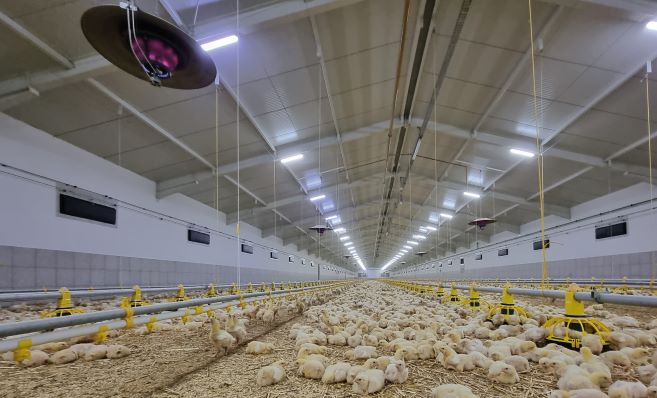Thinking of planning a new poultry unit or shed extension? Ceri Morris, Val-Co area sales manager UK & Ireland, shares what you need to know
When planning for a new poultry unit or shed extension it is vital to get professional advice and guidance. What you might think would be a suitable area to site a unit might not be from a planning point of view, but also from a poultry aspect.
For example, here are some things to consider:
Which direction does the prevailing weather come from?
Is the area in direct sunlight or shaded?
Is it on a hilltop or in a valley?
Are you in an area of high rainfall or high humidity?
All the above will, if not thought out carefully, affect your flock performance, whether the poultry are broilers, free-range hens, breeders, ducks, or turkeys.
Seek advice from people who have experience in these matters. If your neighbour has poultry on their farm, talk to them and see what they would have done differently and what issues they had when building their own unit. Next, look at aspects like vehicle access and biosecurity for the unit, plus access during winter. Here is where a planning consultant specialising in poultry applications can take you through the pitfalls of the application and also to see if the project is feasible from a planning point of view. There is no point starting to spend money if it’s a non-starter.
So, you have cleared the first few hurdles and feel confident to go ahead with project, you then have a big choice of buildings available and then equipment to choose from.
Where to start? Many different systems and many different people will all say their equipment is ideal for your unit. Again, seek advice from your local poultry manager who will take you to see different units and you can make your own conclusions. Most importantly, consider which system suits the type of poultry you are going to be keeping. Remember, less stress for the bird leads to better performance and liveability.
Key factors for bird health and welfare are:
Ventilation and heating/cooling.
Clean water and watering systems.
Easy availability to food.
All the above affect each other and ventilation will vary throughout the seasons and must be monitored regularly. Production is moving towards a focus on lower bird densities and better welfare standards and systems, which, in general, have fewer birds per metre square. This means fewer feeders, drinkers and fans will be required when planning a shed, depending on the minimum standards.
However, more windows per metre squared of shed will be required to meet the guidelines for natural daylight. As for artificial light when windows are not open, LED lighting provides powerful light with much lower energy costs.
If you are growing birds with lower densities it makes sense to do half-house brooding. If you take this approach, two half line drinking and feeding systems with two motors or hoppers with a feed supply in the middle of the house might be a good option to consider in the planning stage. When planning sites, another consideration is trying to future-proof any changes required through legislation or welfare requirements.
For example:
When planning roof construction, keep in mind future placement of solar panels and roof skylights, and make the roof stronger.
Include extra power cables internally for recirculation fans.
Have the facility to add air cooling systems, such as PolAIR by Val-Co, or make it a standard feature when new construction takes place for better productivity and welfare considerations.
A cooling system allows air cooling to keep the poultry at their optimum temperature for growing, egg laying and eating the correct amount to perform at their best, which equals less stress on the poultry.
Temperature variations are becoming more common in western Europe now with climate change. If there is one thing guaranteed, it is that there are always one or two things that, with hindsight, you would have done differently or have forgotten, but provided that all the basics are right you will have a unit that will perform.


